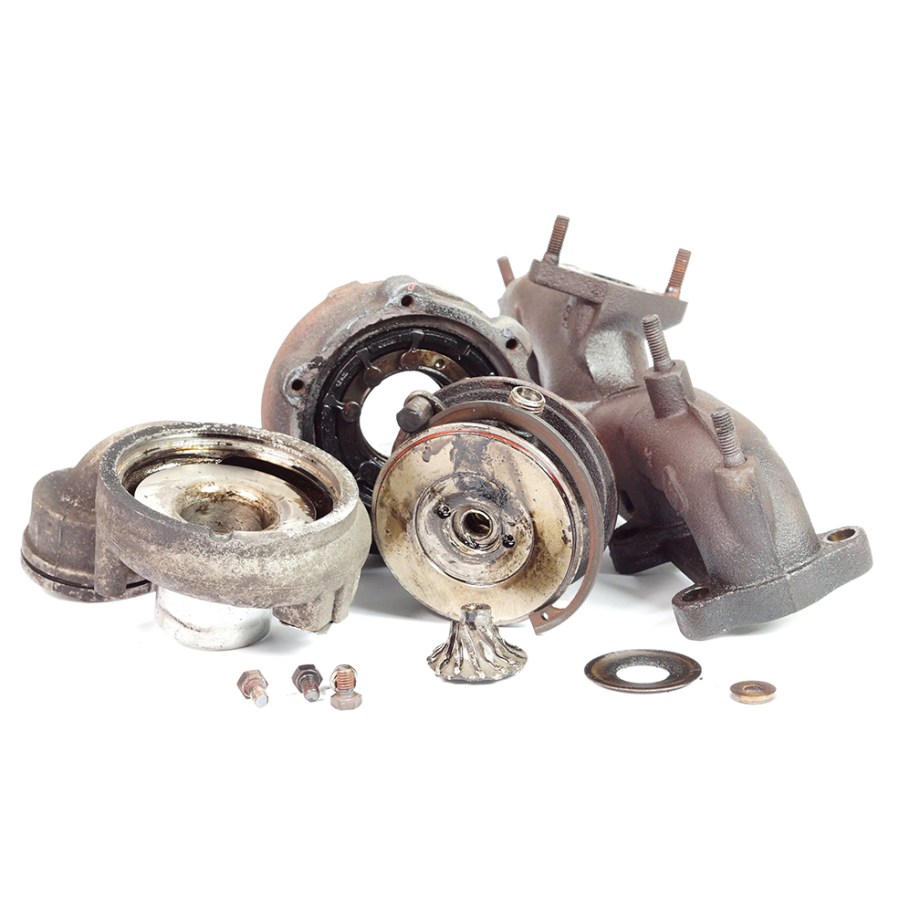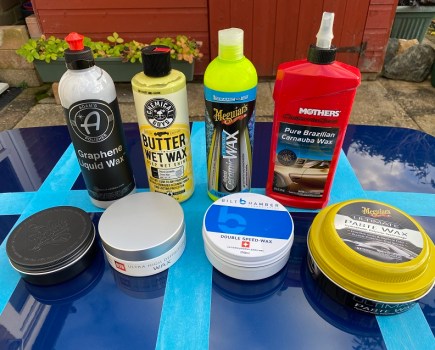We speak to top forced induction experts to find out 13 reasons why turbo failure occurs and how you can prevent it.
Turbos are the magical power adders when tuning a car that put huge smiles on our faces, but treat them badly and they’ll throw a hissy fit of diva-like proportions. However, is it all the turbo’s fault? Or are there other factors at work that are leading to turbo failure? Speaking to a host of top turbocharging experts it appears that, far from being the prissy prima donnas that many people mistake them for, turbochargers are extremely tough pieces of hardware that endure some of the harshest conditions your engine dishes out.
Looked after properly, they can last the lifetime of your car, even when tuned, but they’re not indestructible and they rely on other parts of your engine being in tip top condition too, so read on to see the top 13 reasons you could be killing your turbo and what you can do to prevent it.
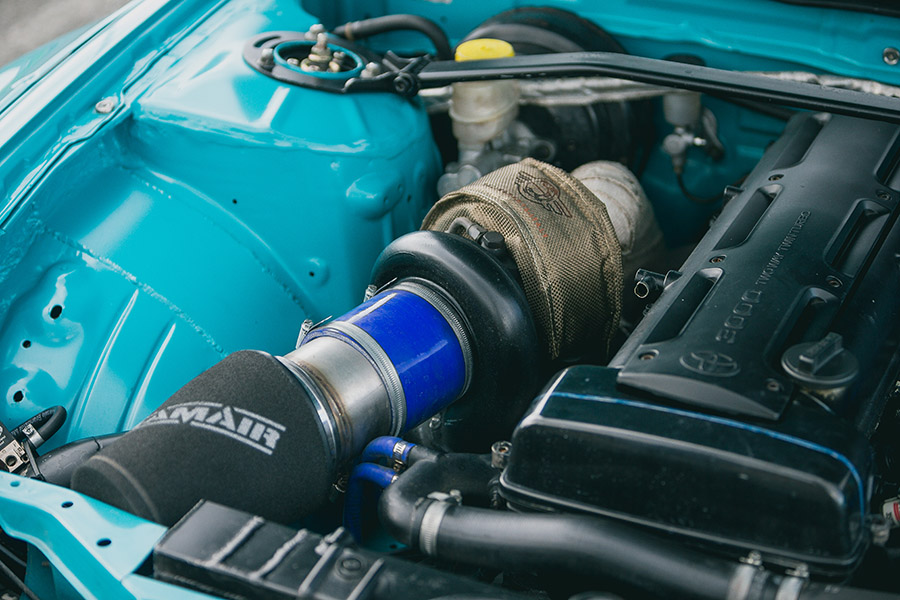
Turbo Failure Due To Oil Starvation
Without question the most common cause of turbo failure is oil starvation. A turbocharger’s turbine shaft runs at speeds of over 150,000rpm and at temperatures exceeding 900°C, and can do so almost endlessly, but only when lubricated as designed to be. To work effectively, a turbo needs a constant flow and pressure of clean, good quality oil (check out our engine oil guide to learn all about it).
This not only works to lubricate the thrust and journal bearings, but also helps stabilize the rotating shaft and journal bearings, as well as acting as a coolant. This requirement intensifies as the turbocharger speed and engine load increases. Even a small reduction in oil pressure can be enough to kill your turbo in seconds and identifiable by either blueing on the turbo shaft or seized bearings. The main causes of oil starvation range from oil pump failure, low oil levels and old dirty oil, to broken or blocked oil feed pipes, which can be obstructing the flow of the oil to the turbo, even if your oil pressure gauge is registering that all is fine at the engine itself.
How to prevent oil starvation
Use a good quality oil and filter and change them sooner than your manufacturer recommended intervals. Keep an eye on your oil pressure too – through either the factory gauge or preferably a more accurate aftermarket item reading directly from the oil feed union to the turbo – as any drop in pressure can destroy a turbo very quickly.
Turbo Failure Due To Oil Contamination
Many people assume that if they run their engine on dirty or contaminated oil, the oil filter will remove any foreign matter before the oil reaches the engine or the turbocharger. However, this can be a very costly mistake. Just like having not enough oil is seriously bad news for your car’s blower, running with contaminated oil is also a sure fire way to experience turbo failure. This is because any particles of debris floating around in the oil system, from the products of fuel combustion such as ash, soot, the un-burnt heavy ends of the fuel and water, to tiny metal particles produced by the general wear and tear of the engine, will eventually get past the oil filter and end up at the turbo causing damage to the usually smooth surfaces of the bearings and shaft.
But it’s not just particles getting past the oil filter that can cause damage, as other engine problems that allow water or fuel to mix with the oil, even in small quantities – such as head gasket failure – will prevent the oil from working as it should, reducing the supportive, cooling and lubricating functions of the oil. And when this happens, it is always the turbo the fails first.
How to prevent oil contamination
Similar to before, a good quality oil and filter, changed well before the prescribed intervals is essential, although adding an inline turbo pre-filter could also help catch any errant particles hell bent on waging war on your turbo.
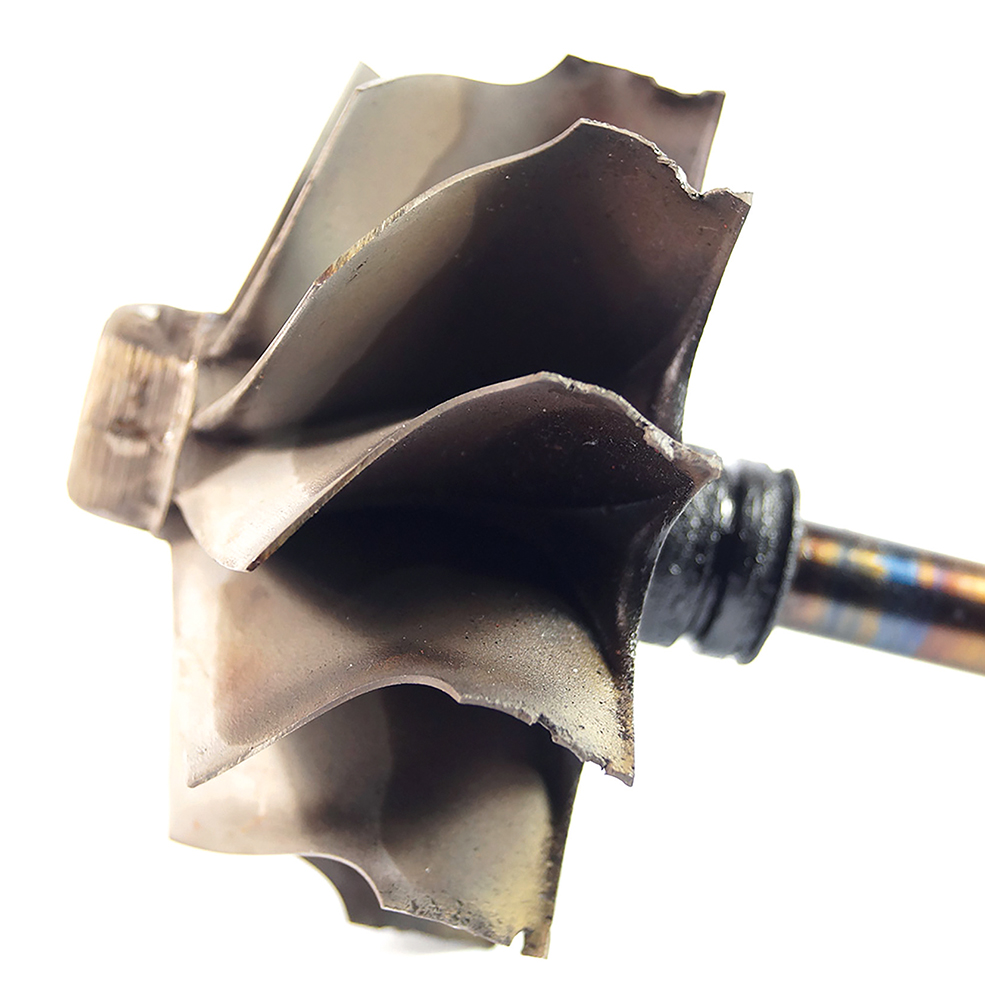
Turbo Failure Due To Impact Damage
The air filter isn’t just there to protect the engine itself from ingesting harmful debris such as dust particles, small stones, dirt and leaves, it’s also there to protect the turbocharger’s compressor wheel and its delicate blades, because almost any object sucked in is going to do major damage and most likely result in turbo failure. Just a small chip in one of the compressor wheel blades will cause an imbalance that will cause the bearings to fail at some point, while greater impacts can snap off portions of the blades or and even shatter the entire compressor wheel.
Although more likely, and easier to prevent, isolated impact damage to the turbo’s compressor wheel, as it can also happen to the turbine wheel by debris from inside the combustion chamber. This could be anything from lumps of carbon, injector tips or broken valve parts, to bits of weld or rust from the manifold. But whatever it is, anything hitting the turbine wheel will cause considerable amounts of damage.
How to prevent impact damage
Always invest in a good quality air filter with good filtration properties as well as air flow and make sure you clean it regularly as per the manufacturer’s instructions. Also, be sure to check the turbo for loose connections and debris, especially if fitting a turbo after a previous failure. If possible, check exhaust manifolds for signs of internal rust or loose weld spots too.
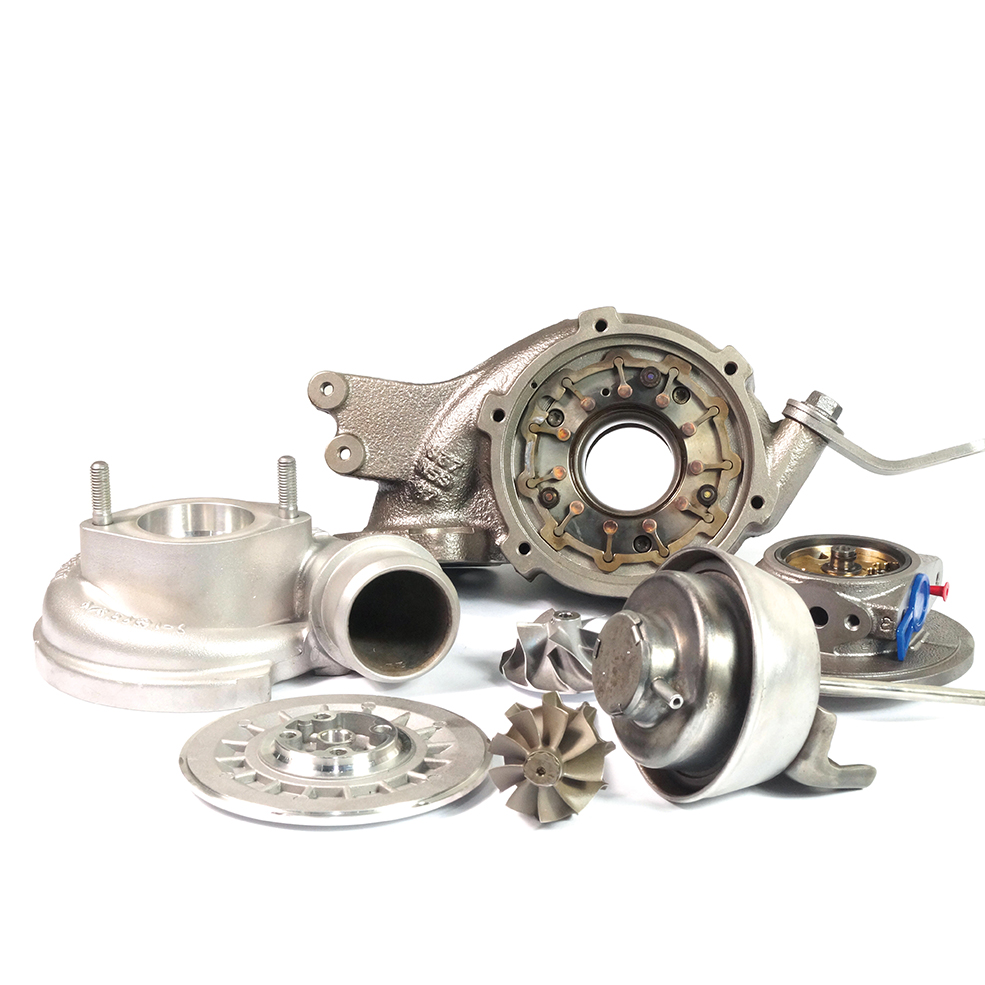
Turbo Failure Due To Build Quality
To meet the stringent OE specifications for any part of your car, only quality assured materials feature, and this applies to the turbocharger too. Add in the constant quality checks on both the materials and workmanship and you can see why original equipment parts can be expensive. A high quality aftermarket turbo, built by a reputable specialist, will also have strict quality control, testing and development procedures to ensure your turbocharger is fit for purpose. Like with the OE parts, this also adds to the cost. The problems can arise when you try and cut costs by purchasing cheap turbos.
These turbos are cheap for a reason and often is down to a lack of quality control when it comes to the materials and workmanship when building the turbo. This can mean that, although they may seem fine for a short period of time, their usable lifespan radically reduces, meaning that the savings you make on the purchase price disappear through having to buy twice when you experience turbo failure.
How to prevent it
Always do your research into the turbo you are considering buying and the company that you are buying from to ensure you are getting a quality product that has been tested and developed to deliver the results you need. Also that the company can provide the backup in the case of any problems and technical queries. The same applies to reconditioned turbos. Make sure you are buying from an experienced specialist like TurboZentrum, that knows what they are doing and has repaired the turbo properly to the right specifications.
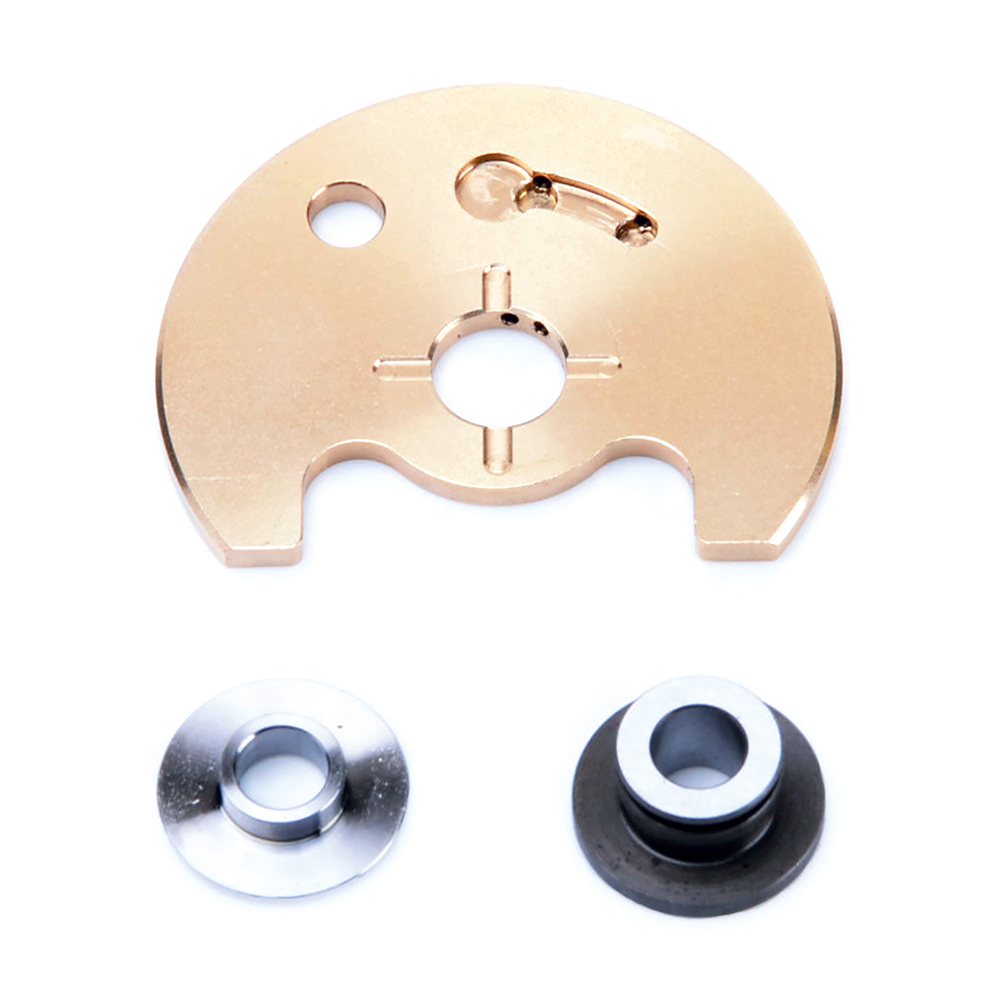
Thrust bearing failure
As the compressor wheel spins, it is effectively trying to pull the shaft out of the front of the turbo. The turbo’s thrust bearing prevents this by holding the shaft in place and resists this axial force. When designing the turbocharger, the thrust bearing is selected to deal with the standard boost pressure that the turbo is going to see, often using a 270° bearing.
Start increasing the boost by way of a remap for example, and the thrust bearing will start to struggle to contain it. This can lead to a reduction in lubrication and a rapid increase in wear of the thrust bearing, which is identified by in-and-out play in the shaft and smoke from the exhaust.
How to prevent thrust bearing failure
If your car’s turbo is looking past its best, it’s a good idea to have it checked over before you ask it to work harder. This could involve getting it refreshed by a turbo specialist with new bearings or even uprated bearings if you are planning on pushing things further so you don’t experience turbo failure.
Stopping The Engine When The Turbo Is Hot
A turbo spinning at up to 100,000rpm creates a lot of heat in the shaft and bearings, much of which dissipates by the flow of oil. When allowed to slow down and cool over a reasonable period of time it isn’t a problem. However, by shutting off an engine immediately after being on boost the flow of oil stops and that heat is trapped inside the turbo. This heat can cause damage including a warped shaft – due to turbine droop – as well as carbonizing the oil and damaging the bearings too. At this stage it’s all over and turbo failure is imminent.
How to prevent it
It’s recommended that you end your journey at a more sedate pace or, once at your destination, simply leave the engine ticking over for a few minutes to allow the turbo to cool down before shutting it off. A turbo timer allows the engine to run on for a set period of time after the ignition has been turned off and the key removed.
Turbo Failure Due To Clogged Engine Breather
The engine breather system is an important part of the engine, it’s a one way valve that allows high pressure blow-by gasses from the crankcase to pass through without causing excessive pressure in the oil system. If clogged it will allow excessive pressure to build up in the engine which will then pressurize the turbo system, causing oil to force its way past the bearings, causing both damage to the bearings themselves and blue smoke emitting from the exhaust.
How to prevent getting a clogged engine breather
For most moderate stages of engine tune, the standard PCV system should cope with the increase in engine power whilst continuing to control the emissions from the crankcase. However, even on a fairly new car, the system should be thoroughly checked and any suspect valves and hoses replaced. For motorsport applications or more radical stages of tune a remote catch tank vents excess pressure and collect any oil vapor.
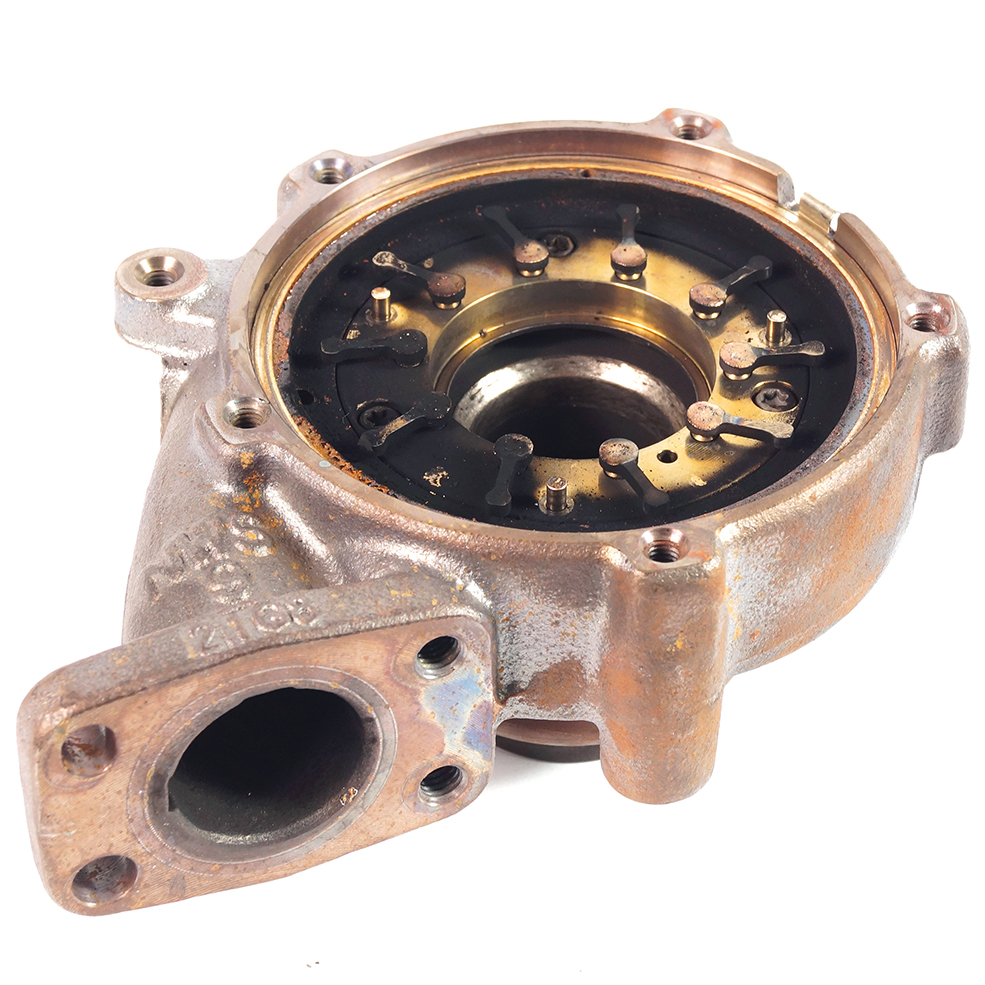
Turbo Failure Due To Carbon Build Up
Not only can running your turbocharged car on old, dirty oil cause damage and wear to the bearings and shaft of the turbo, but it can also lead to a gradual build-up of sludge, not just in the sump and the engine’s oil galleries, but in the turbo’s oil feed pipework and inner oil ways too. Just like arteries in your body, these crucial pathways for the flow of oil – some of the narrowest being as small as 1mm in diameter – are essential to keep your engine and turbocharger in top condition, so any restrictions or blockages due to carbon sludge deposits can prove fatal for your turbo.
Some cars seem to suffer from carbon build up and excess sludge more than others and as this is an inherent design flaw, there is not much you can do about it other than keeping an eye on your oil condition when checking levels – thick black oil needs changing fast – and carrying out regular servicing.
How to prevent carbon build up on your turbo
The use of good quality oil and fuel will help limit potential build up, as will regular oil and filter changes. Also, make sure to inspect the waste oil and filter for signs of build up when you replace them to get an insight into what’s going on inside the engine.
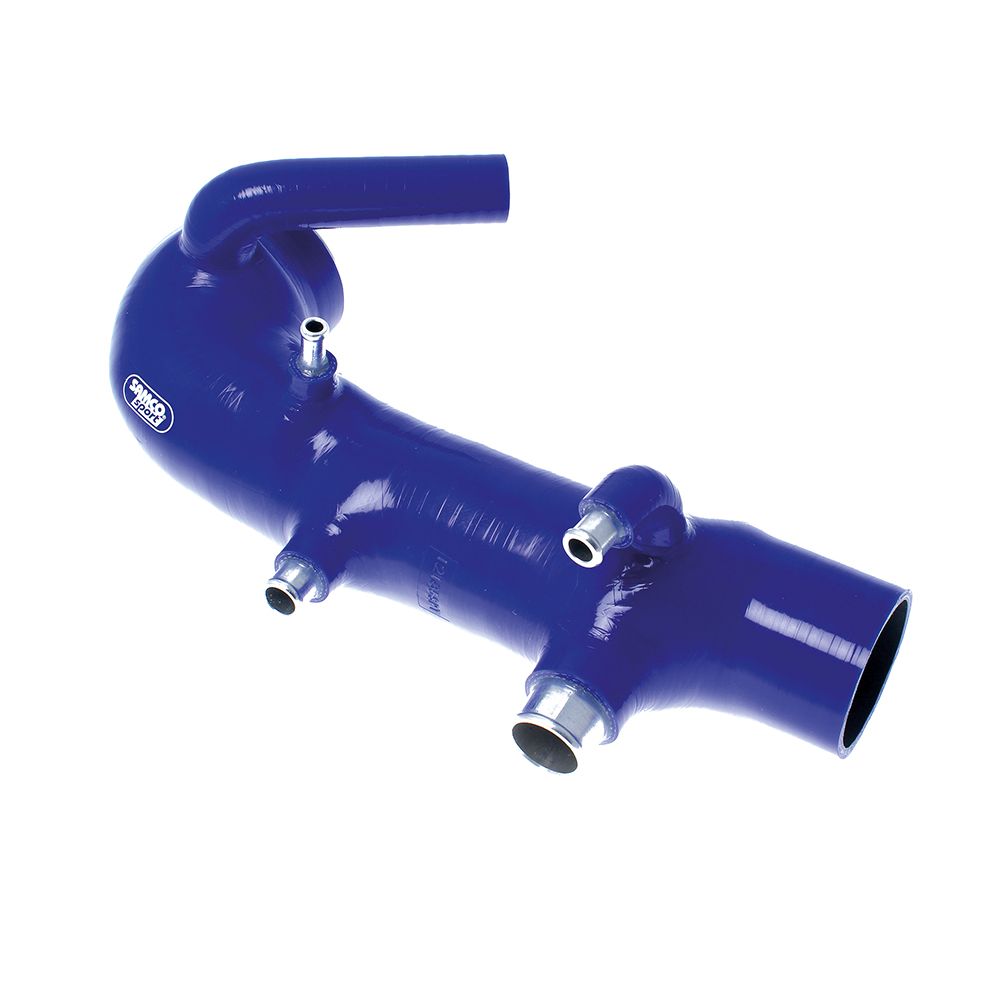
Turbo Failure Due To Over-Boosting
Also known as ‘over-speeding’, over-boosting is where the turbocharger is operating well above its normal limits, and, like any component that is working harder than it was ever designed to do, this causes excess wear and eventually damage. This damage can effect everything from the bearings to the shaft and even the turbine and compressor wheels themselves, which can actually expand and rub on the turbo housing, causing damage to the blades, or even burst apart completely due to the huge rotational forces.
Over-boosting can occur for various reasons from incorrect ECU remapping to a faulty or undersized wastegate or actuator, but is more commonly down to a simple air leak in the turbo system. There are numerous places that air can leak from the turbo system including broken gaskets, split hoses or punctured intercoolers, all of which force the turbo to work harder and harder to try to reach the required boost pressure. This cycle continues until the turbo exceeds its manufactured limit and fails, often with dramatic results.
How to prevent over-boosting your turbo
Ensure that all the turbocharger pipework, as well as the intercooler is sound with no splits, cracks or leaking joints. If you are increasing boost on a car with old rubber hoses, consider uprating to silicone hoses which will not perish over time and are capable of holding greater pressure. Also, ensure that the wastegate and actuator are operating correctly and that they are rated to suitably vent enough air flow to maintain the desired level of boost.
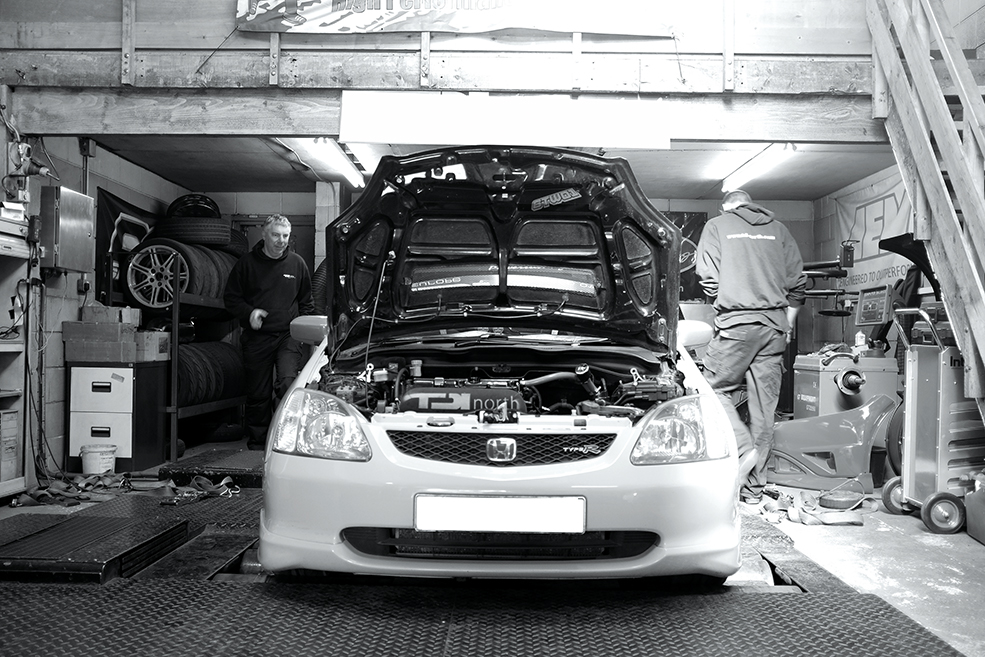
Make sure you do your research and select a reputable tuner
Bad Remaps Can Result In Turbo Failure!
Remapping is a procedure where the fueling, timing and boost parameters of your car’s ECU alter to provide more power from the engine. It is usually very safe when done by a professional, especially one who examines the engine for faults before they begin the process of updating the car’s ECU with an uprated map that keeps the turbo within its tolerances.
Unfortunately, as well as there being many unscrupulous and poor quality mappers out there, there are also many cheap remaps available that achieve more power by simply upping the boost levels and nothing more, causing over-boosting among other potentially damaging issues to both your turbo and engine as a whole.
How to prevent it
When selecting a tuner to remap your car, make sure you have done your research and checked feedback from previous customers. Also try and speak with the tuner first to see if they suggest any other supporting modifications to get the best results. And remember, as well as a way to gain more power, a remap is also fundamental to how your car drives and how reliable it is, so don’t just go for whoever offers the most gains for the least money.
It’s also worth checking your own car over before you book it in for a remap to ensure no faults exist.
Turbo Failure Due To Compressor Surge
Turbo cars make some great noises, especially when tuned, and that’s all part of the fun. But some noises can signal problems that, unless sorted, can lead to premature turbocharger failure. One such sound that you don’t want your car to be making is the ‘flutter’ or ‘turkey gobble’ sound sometimes wrongly referred to as ‘wastegate chatter’.
This noise is the sound of compressor surge, which happens when the turbo is delivering more air than the engine can take in, which then backs up in the system and eventually tries to force its way back through the turbo the wrong way, hitting the still spinning compressor wheel blades. This may sound pretty cool, but the added pressure on your turbo will cause accelerated bearing wear.
How to prevent compressor surge
A blow-off valve suited to the amount of additional boost that needs to be release eliminates compressor surge. However, if you are still experiencing surge when you are at wide open throttle – when any BOV would be shut and not flowing any air anyway – you need to look at other areas such as turbo sizing, wastegate and actuator function and mapping.
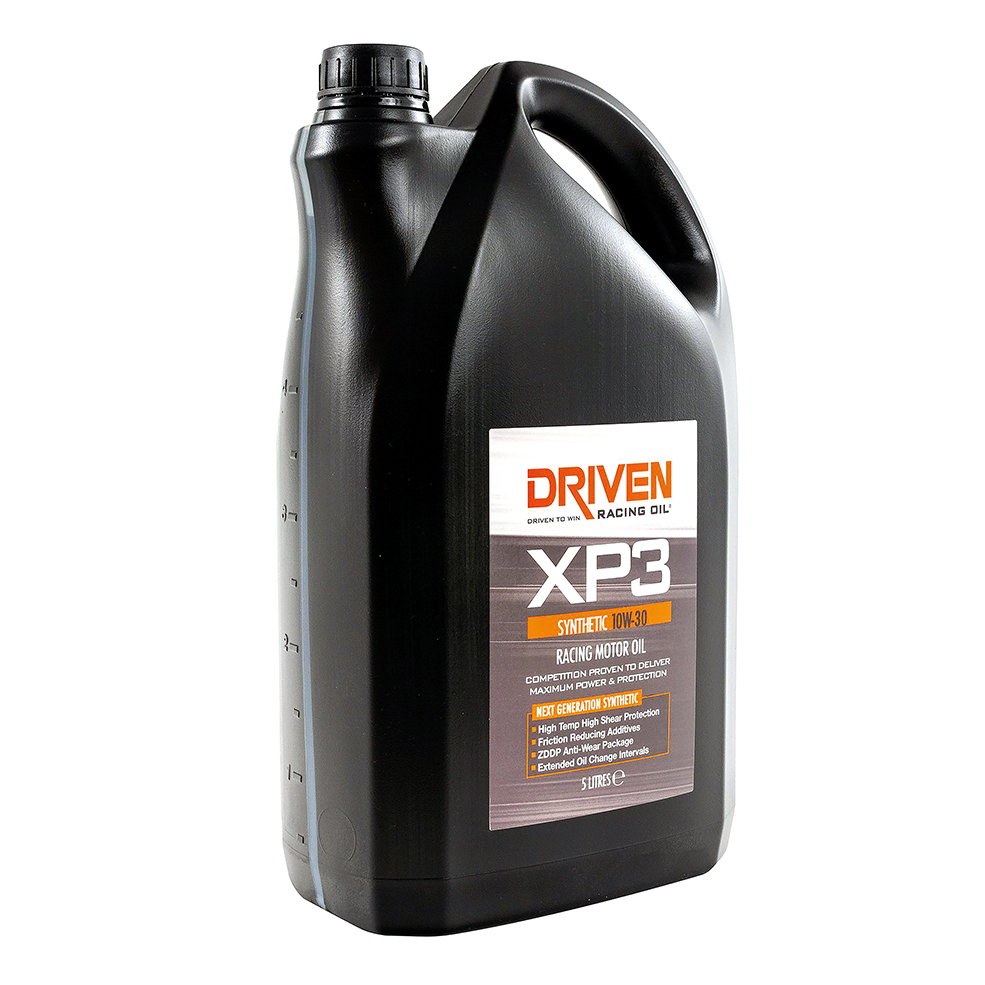
Fitting a dry turbo could result in failure!
If you’ve had your turbo serviced or have bought a replacement or upgraded turbo, don’t fit it unless you have primed it with oil first. From the moment the engine fires up, the turbo will begin to spin very fast. If the oil feed pipe is empty and the turbo un-primed it could take several seconds for the vital lubrication to reach the turbo, which could easily cause damage to both the bearings and the shaft.
How to prevent it
Simply pouring some oil through a straw into the turbo’s oil inlet hole will get you going but, ideally, once fitted, you want to stop the engine from firing up by unplugging the ECU or similar and turning it over until the oil light goes out on your dashboard. You can then start the car normally, however, it’s recommended you leave it idling for around five minutes to allow the oil to warm up before going on a test drive.
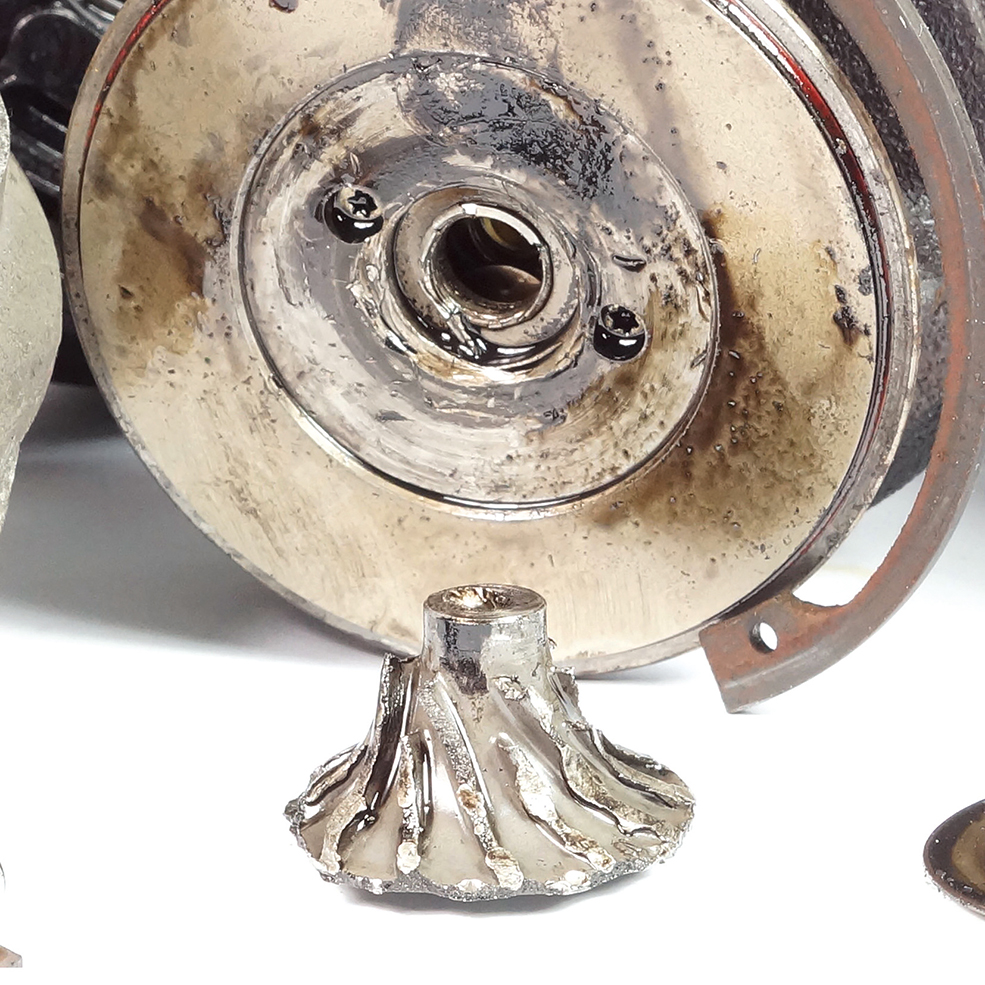
Turbo Failure Due To Excessive Exhaust Gas Temperatures
Whilst turbochargers withstand the high temperatures generated during normal operation, if the temperature of the exhaust gases is too high, then it can cause catastrophic damage. Typically, to the turbocharger’s turbine, cracking the housing, causing excessive erosion and corrosion, whilst causing collateral damage to other components, like the wastegate.
How to prevent it
Various things cause excessive exhaust gas temperature (EGT). This includes poor quality oil, faults in the oil cooling system, incorrect mapping or engine modifications and poor maintenance. To ensure your car is staying within a safe range, fit an EGT sensor, ideally one that feeds back to the ECU. That way, if the temperatures go up it can shut down the engine before any damage.
Turbo contacts
- www.turbozentrum.co.uk
- www.samcosport.com
- www.drivenracingoil.com
- www.bmcairfilters.com
- www.cataclean.com
- www.turbosmart.com
- www.revivecleaner.com
- www.turboperformanceltd.com
- www.telfordturbos.co.uk
Words: Dan Sherwood & Jamie King.

